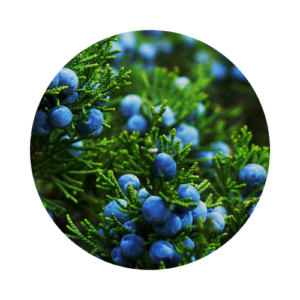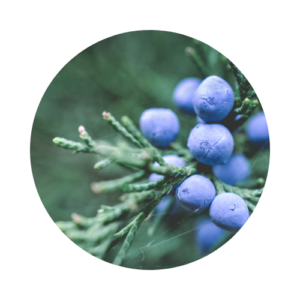Our new house was in many respects underwhelming.
It was an older ranch home, yellowing white with seafoam green shutters. It boasted a small front porch with peeling white railing, but the side door was much more accessible, so we always used the long flight of crumbling concrete steps that led from the driveway to the snug and almost cupboard-free kitchen, walls tiled in bronze and gold mushrooms. The dark—nearly black—paneling in the dining room and attached, screened in porch was overwhelmingly gloomy. The bedrooms were small for our growing family, and much of the usable space in the house was in the dimly lit basement.
But I knew immediately that I had been given a gift. The gift of a lifetime.
There were three acres—a veritable wilderness after our tiny Texas yard—to explore. There was a garage, a shed, and a barn. There was a fenced-in yard around the house, and behind the barn, just out of view, meandered a stream—with a bridge! Meadows dotted with occasional stands of juniper, and surrounded by sumac, maple, and oak formed an L-shape around two sides of the house.
The front of the house faced the road, barely visible through more junipers, maples, and oaks. It was in those junipers that one year, a few weeks before Easter, I was thrilled to discover a pink plastic egg filled with candy and was swiftly disappointed when mom insisted we throw it away.
On the right, just beyond the driveway, a split rail fence separated our yard from our neighbor’s. Mom had seen her eyeing us suspiciously on moving day and had warned us to play very quietly and harmoniously whenever she was outside. It was obvious that a large family of small children was not her ideal candidate for the house next door.
Apparently we succeeded in winning her over, however, because sometime during that first summer Ms. Edmister approached my parents about the possibility of boarding her horse in our barn. The details were soon arranged, and we were ecstatic. It felt like a fairy tale. Ms. Edmister, a small, slight, energetic woman with short-cropped graying hair, freckled arms, and a dry sense of humor, would be boarding Candy with us.
Candy, a dark brown—almost black, I remember her as black—quarter horse, had a small candy cane shape between her eyes. She was a little high strung and we were warned not to approach or attempt to ride her on our own. She might spook. But we could be in the barn while she was in her stall, help Ms. Edmister with her care, and wander the meadows while she was outside as long as we kept our distance.
Candy was soon joined by Hilda, our landlord’s horse. I felt an immediate affinity with Hilda. She was gentle—kind, really. She was brown, with a black mane and tail, and a white sock or two. I loved to feed her apples and carrots, savoring her soft warm lips brushing my palm. Her presence was soothing, calming, true.
We arrived home from church one Sunday noon to find a buff and tan Shetland pony busily cropping in the meadow alongside Candy and Hilda. Oh, the dizzying excitement and profusion of theories buzzing around the Station Wagon while my parents asked Ms. Edmister about the new pony! Why would she want an old pony, we wondered? Could it be for us? To keep?
Yes, she dryly explained, she’d saved him from the glue factory especially for us. Buster was stubborn and blind and ancient, but he was ours.

My sister Missi loved the horses themselves. I loved caring for them.
It was in caring for the horses that I discovered the pleasures of process, of progress. Of repetitive tasks accumulating towards a final goal. I savored the certainty and rightness of daily responsibilities.
Buster was a joy to curry comb. As long as I worked the dust and caked mud from his coat in firm purposeful rhythmic strokes, he would hold perfectly still in the shaft of bright sunlight streaming into the open barn door and swirling with microscopic bits of dust and hay. I would protectively flick flies away as I gradually combed the tangles from his mane. I loved the occasional stomp of his feet, the flick of his tail, the warmth of his side, the lingering sweet-sour smell of his breath.
Mucking out stalls was a game of precision and rhythm. Aim, scoop, swing, dump. Aim, scoop, swing, dump. You won when you got to roll the wheelbarrow out behind the barn, skirting a juniper stand, to upturn its contents into the manure pile.
Polishing saddles and bridles offered immense pleasure and satisfaction. The bright tins of saddle soap fit snugly in my hand; their lids clattered gladly on the workbench in the tack room as I inhaled the rich scents of leather and tallow. I relished watching the leather gradually appear richer and grow more supple under my ministrations.
I felt strong and competent as I worked. With aching muscles, soaring pride, and growing trepidation, I would submit what I hoped was the finished product to Ms. Edmister for inspection. Would it be up to her standards?
My favorite activity and especial chore was skimming the horses’ trough. The waist-high black trough stood just to the left of the barn under the shade of several large juniper trees that consistently dropped into the trough berries, twigs, greenery, and those mysterious gray-brown bagworm cocoons that resembled slender, limp pinecones.
Ms. Edmister tasked me with keeping the water clean and fresh. She equipped me with a long-handled green net and showed me how to gently draw it through the water, carefully managing the swirling net so as to collect debris without then losing it back into the water.

I delighted in every aspect of my task. The rippling, reflective waters, swirling under, around, and through my patient net. The tap of the handle and spatter of the water as I turned out my net, jewel-like debris pouring to the ground. The crisp scent of cedar and the rich smell of earth. The play of shadows and sunlight through the branches above me.
I spent countless contented hours skimming the bobbing, shiny, blue-gray berries, flat green sprigs, and long, thin strips—almost strings—of bark shed by the junipers. I worked at a slow, dreamy cadence, lost in the task, in the kaleidoscopic debris, in the ripples of water following my net, in the delight of serving the horses, in the pleasure of doing a job well.
It was at dusk in the shadow of the junipers that I learned what a good conversation sounds like. Returning home from completing the evening barn chores with Mom and Ms. Edmister, we had just turned off the barn light and were following the beam of Ms. Edmister’s flashlight as it pushed back the night. I was afraid of the dark but sure of my protectors.
Conversation rolled over me. I don’t recall the content, but I vividly remember the cadence. Their eager voices and warm laughter bubbled and tumbled over each other. Each freely broke into the other’s thoughts and they often finished a sentence together, voices blending in comfortable fellowship. Ideas, thickly clustered, served to build connection, and though silent, I felt a sense of community, of camaraderie, of comfort.
Conversations with my daughter regularly bring me back to that walk along the junipers. Together we are free, relaxed, comfortable, at ease. Same and warm against the shadows.
The summer she turned eleven, she confided that she planned to try five new foods that summer and asked me to help. Already adventurous eaters, we visited a world market in search of interesting flavors and textures. She selected lotus root, enoki mushrooms, a prepared curry snack, sumac, and juniper berries.
It was perfect. She and I, alike in the best ways and different in the best ways. Juniper berries, to me a symbol of routine and repetition, were to her a chance for something fresh and new.

Rachel Brown
enjoys sipping tea, savoring good books, and spending time outside.
She is daily inspired to live more deeply and love more fully by her husband and two children.

One Response
I love it! It is beautiful.